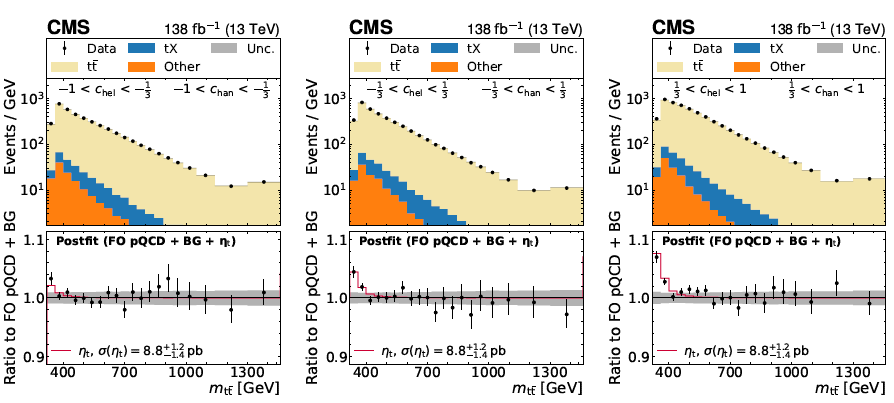Very recently,
a combination of the precise measurements of the mass of the top quark obtained by the CDF and DZERO experiments at the Fermilab Tevatron collider with those produced by the ATLAS and CMS experiments at the CERN LHC collider has been produced, obtaining a result of 173.34 GeV, which surprised nobody -of course- with a very small total error bar: 0.76 GeV, a mere 760 MeV, not even a proton's mass.
This must be the boosted b-jets season... Just a few days ago I discussed here the nice new observation of boosted Z->bb decays pulled off by the ATLAS collaboration using 8-TeV proton-proton collisions recorded in 2012. And today I am pleased to see in the Arxiv a
new study by D. Ferreira de Lima, A. Papaefstathiou, and M. Spannowsky on the possibility to measure the pair production of Higgs bosons in their decay to two pairs of b-quark jets.
I was delighted today, as I checked the page of public ATLAS results, to find a very beautiful new result. The signal ATLAS found and
just published on the arxiv is not one anybody could doubt to be there: no surprise whatsoever. And yet, it is a difficult one to extract, and one on which I myself have spent several years of my research work on the CDF experiment.
The 35th international chess tournament in Mogliano Veneto this year did not feature strong grandmasters or international masters, but a pack of 24 local players of average strength around 2150. Still, it was a very hard-fought competition, with almost no game ending as a draw before all winning attempts had been tried.
I scored a rather disappointing 2 points out of 5, losing two games -one of them undeservedly, for a performance rating is 2030, a bit less than what I believe is my current playing strength. Below I report my only win, against Enrico Danieli, an elo 2070 player.
Danieli-Dorigo, Mogliano 2014
1.d4 d5 2.Nc3 Bf5 3.e4?!
A
meteor caught on film during its non-luminous free fall at terminal velocity ? Or an elaborate hoax ? Or something else ? I must admit that when I saw the video posted in the internet a few weeks ago I was intrigued, and operated a willful suppression of disbelief. The footage showed a free-falling black stone that really looked like a meteoroid, passing by the owner of the camera hanging on a parachute, on the skies of Norway. I wanted to believe!
 Above: sum of frames from the video shot by the parachuters
Above: sum of frames from the video shot by the parachuters
 On A Roll
On A Roll When The Attack Plays Itself
When The Attack Plays Itself Toponium Found By CMS!
Toponium Found By CMS! The Problem With Peer Review
The Problem With Peer Review









